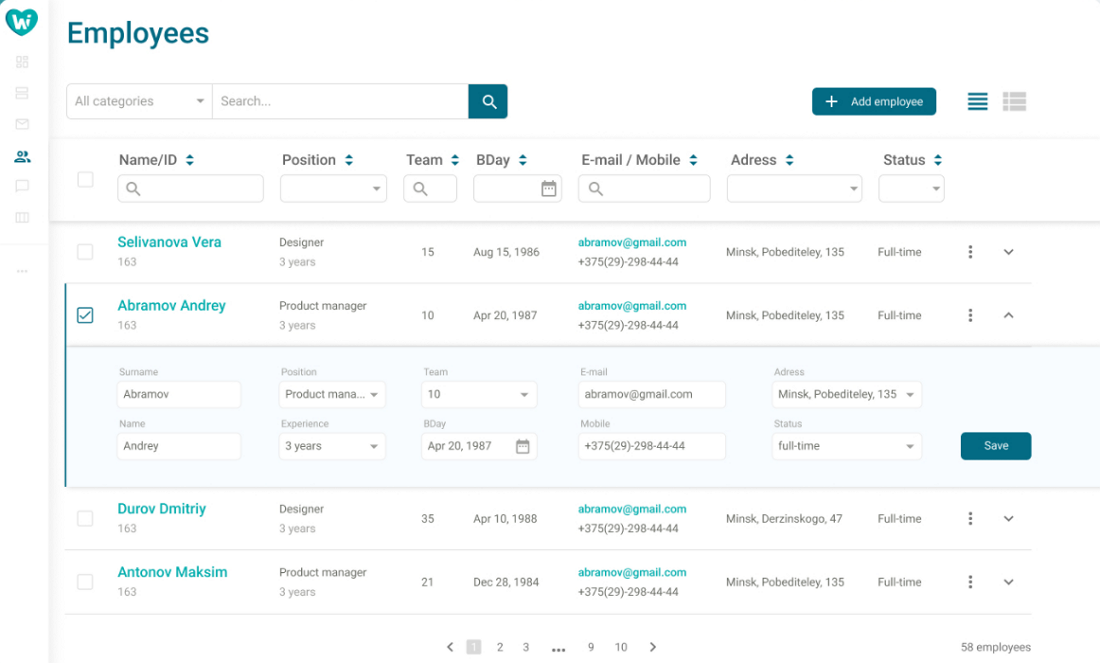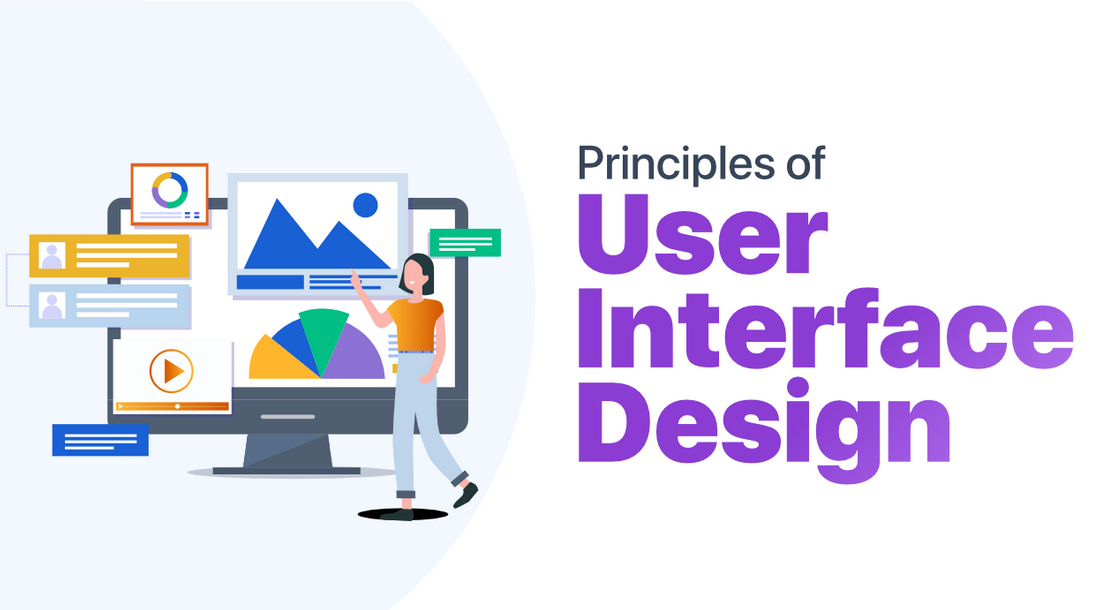Table Of Content

What’s imperative, is presenting a clear viewing order to the visual elements of your user interface design. The best practice is to appeal to your users’ previous experiences when they interact with your product/website. Designers achieve this by utilizing familiar concepts, design elements and wording within their UI design. Good UI follows the same software design principles – it provides users some context of where they are, where they’ve been, and the next few steps they should take.
The Design of Everyday (AI) Things by Sam Stone - Towards Data Science
The Design of Everyday (AI) Things by Sam Stone.
Posted: Fri, 06 Oct 2023 07:00:00 GMT [source]
What Tasks Will You Perform as a Content Strategist?
The principles of design in art are foundational concepts that guide the creation and evaluation of artworks, ensuring visual harmony, balance, and cohesion. These principles include balance, contrast, emphasis, movement, pattern, rhythm, and unity/variety. Each principle plays a pivotal role in organizing or arranging the visual elements in a design, ultimately shaping the viewer's experience. This comprehensive resource provides insights into the interconnectedness of design principles in various mediums. Yes, UI design is an excellent career choice for individuals interested in the intersection of creativity, technology, and user experience.
Shneiderman’s Eight Golden Rules Will Help You Design Better Interfaces
We achieve asymmetrical balance when we arrange differently sized elements in a way that results in unity. We can imagine a centre point of the design and distribute the elements in a way that creates balance. Hierarchy shows the difference in importance of the elements in a design. Colour and size are the most common ways we can create hierarchy — for instance, by highlighting a primary button, or using larger fonts for headings.
Elements of Visual Design
An easily navigated interface is a crucial element of control within good UI design. Navigation should be made so clear and obvious that it becomes an unconscious, enjoyable experience for the user, rather than a nerve-racking one. As the author Ben Shneiderman describes in his superb book, Designing the User Interface, high-quality interface designs are ones that users can understand, predict, and control. In the second lesson, you’ll learn about the science and importance of color. You’ll gain a better understanding of color modes, color schemes and color systems. You’ll also learn how to confidently use color by understanding its cultural symbolism and context of use.
The most ingenious UI design is practically invisible—users feel as if they’re in charge, and making great choices. Empowering UI takes time and effort to achieve— but Figma’s collaborative online design platform keeps you on track for success. Figma's free UI design tool brings your ideas to life, and Figma's community of design professionals keep the UI inspiration coming. But what is UI design today, and what role does it play in the design thinking process?
Apple's Vision Pro could be the next stage in UX design - Fast Company
Apple's Vision Pro could be the next stage in UX design.
Posted: Mon, 19 Jun 2023 07:00:00 GMT [source]
According to this concept, user engagement can be raised by including amusing tiny interactions, animations, and personalized aspects. Designers may create more emotionally impactful and memorable experiences that linger with users, encouraging brand advocacy and loyalty, by including joy into the process. This also applies to web designers because they work on the websites, applications and services that end users will use. They must create the best user experience, which means they need to know the end user's needs, expectations, and preferences.

Finally, you should never compromise readability – you must ensure text and other vital elements stay clear and readable against their backgrounds. For example, sharp edges, like a “pay now” button, can make something look urgent. On the other hand, rounded corners give a softer, friendlier feel.By embracing the UI Design Principles, designers use shapes to send messages and create feelings. These shapes guide users’ emotions and thoughts as they interact with the design. The use of the same design patterns and elements throughout an interface is referred to as consistency in UI design.

Philosophy of Interaction
Proportion is one of the easier principles of graphic design to understand. As already mentioned, there is no real consensus in the design community about what the main principles of design actually are. That said, the following twelve principles of visual design are those mentioned most often in articles and books on the subject. You can take this approach even further by applying a wider area of personalization and bringing more human-friendly options. It is a bolder method, but you can allow users to change the colour of some graphic design elements that appeal to their personal taste.
Effective UI design removes as many obstacles, bottlenecks, stumbling blocks, and potential causes of confusion as possible from the user experience. Establishing measurable goals will help guide your design decisions, as well as provide a reference point for how successful your design is upon launch. While new users might require more guidance, experienced users should have access to shortcuts and accelerators which enable them to speed up frequently-performed actions.
Instead, brands should make users feel like they are the ones in the driving seat and not just taking a free ride. Designers must balance the need to stand out with the need to create an intuitive and user-friendly experience. Too many designers fall into the trap of only thinking about aesthetics and completely forgetting that people still operate computers.
As the user moves through an interface, it’s essential to provide them with feedback. This guides them towards their goal, letting them know if they’ve successfully completed a certain action or informing them if something’s gone wrong. Feedback can be provided visually — like a tick appearing on the screen to let the user know their desired action is complete — or through clear, concise messaging. The answers might reveal a lack of clarity, the need for more flexibility and user control, or a problem of having to go through too many steps to complete a task. It’s the ideal place to start embedding UI design principles that make your product experience smooth, efficient, and delightful. The function of UI design is not the design itself—it’s about how it influences the experience your users have with your product.
Once the broader public adopted personal computers, UI designers realized modern technology needed new organizational methodologies that anyone could grasp. It’s important to keep in mind that no matter how powerful your software is, customers will never be able to use it if they get lost in the interface they’re using. Hierarchy in design refers to the arrangement of elements in a way that signifies importance.
You create your visual hierarchy by designing your composition through fonts, colors, contrasts, and white space. UI design is the craft of engineering a smooth, enjoyable experience for users as they interact with websites and apps. As the art of UI evolves, a list of UI design principles has emerged that designers refer to when creating their work. UI design principles are the guidelines that a UI designer uses to ensure a fluid, logical, and enjoyable user interface experience. Unity helps guide the viewer's attention and ensures a consistent, integrated visual experience.
User interface (UI) design is the process of designing the look, feel, and interactivity of a digital product. It’s important to note that UI design is not the same as UX—although the two regularly go hand-in-hand. Here’s how you can use Hotjar’s Observe and Ask products to improve your product experience with UI design principles. And make sure to constantly test your designs with Maze to iterate as you go through the process and launch confidently. Getting user feedback on your product prior to launching it ensures that it’s as user-friendly as possible.
They calculate the contrast ratio based on the colour palette of a website. However, if your website's font is too small, they will have trouble reading it. When choosing the right font size, you must consider the user's computer and viewing distance. For example, if you want to create a unique effect in the background of your website, you should use a bolder typeface. The best way to use typography in a UI design is to stick to one primary typeface. Using multiple fonts makes the design look unprofessional and cluttered.
Virtual mistakes can make a psychological impact and form a negative emotional response. It can actually increase the anxiety feeling and make the user stop interacting with the website without even starting to analyze the cause. There is no way to avoid interface errors, however, you can think of a way to make that kind of interaction more user-friendly and smooth. Imagine having a three-course meal but you start with the dessert, then move on to the main course and you finish up with an appetizer or a salad.

No comments:
Post a Comment